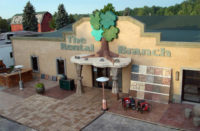
Having had the opportunity to travel this great nation from coast to coast and visiting many places in between, I’ve heard a common statement about the current state of the construction marketplace in general and the decorative marketplace in particular. Sometimes it is uttered as a rhetorical question, while other times it’s a simple statement of fact: Where has all the skilled labor gone? Or, there isn’t enough skilled labor to fill the backlog.
Whichever way the question or statement is delivered, the fact remains the same: We have a severe shortage of skilled labor in the concrete construction industry.
Shortage is severe
According to the U.S. Chamber of Commerce, as reported by Commercial Construction index Grace Donnelly/Fortune, 95 percent of contractors had a moderate to difficult time finding skilled workers for their job openings in the second quarter of 2017. Going forward, they don’t see it getting any easier either. The biggest shortage is concrete workers.
For our industry to thrive, we need a huge influx of new talent.
Contractors also state that there is concern about the skill level of employees already on the payroll. More than half of the contractors are highly concerned about their workers having adequate skills. While the report goes on to state that the demand for construction jobs is up eight-fold from the same period in 2009, lack of skilled labor makes it highly questionable as to whether the industry can adequately fill the openings.
In a previous article I noted that in Italy it always seemed to be the “old men” who were repairing the cobblestone streets while the young men stood by looking disinterested. Who will be our next generation’s true craftsmen and what are we doing as an industry to see that they are properly identified and trained? Will we be able to fill the demand for skilled labor or, out of lack of such talent, will our future hardscapes be relegated to simple utilitarian gray concrete that is functional but otherwise unimaginative?
Ongoing training is a must
It appears we as an industry have correctly identified the problem: Skilled labor shortage. However, to date, we have been unable to come up with the proper antidote or solution.
The problem and solution are twofold.
I believe most manufacturers within the decorative industry have awoken to the idea that once workers are in the concrete workforce, proper training needs to be offered on an ongoing basis. This is evident by the increase of training opportunities that has been offered by many manufacturers and advertised in this magazine.
So, we have identified the problem of providing additional or specialized training once we have increased our labor force and are taking steps to provide training once new talent has entered the workforce. Still, the larger question remains, how do we attract new talent to the concrete industry in the first place?
Attracting new talent
“Back in the day,” high schools were replete with a variety of “shop” classes — from woodshop and metal shop to auto and construction-related classes — that allowed students to gauge their interest and provide the initial exposure and education necessary to pursue such a career. Some public schools even built a single home over the course of a school year.
For various reasons, too many to enumerate here, most of these opportunities no longer exist. The mantra I hear constantly repeated to the rising generation is: Go to college and become a professional like a doctor, lawyer or IT specialist. Don’t get me wrong. We need these professionals and all are noteworthy. However, we also need tradesmen and craftsmen, concrete finishers and electricians.
It is estimated that in the coming years the country will spend approximately $1 trillion in infrastructure improvements. At our current construction industry levels, we can’t handle the demand for the increase in skilled labor it will require to satisfy such demand.
Our industry needs a marketing outreach program of epic proportions. One that can reach an entire generation of upcoming millennials. One that will let them know the “trades” can be professionally satisfying and financially lucrative.
Attracting new talent and addressing the need for more skilled labor is talked about at nearly every construction summit, tradeshow or get-together. I know it was a topic of conversation at a recent American Society of Concrete Contractors’ meeting in Phoenix. The ASCC, along with other organizations and manufacturers, do a wonderful job of promoting and facilitating training opportunities once we have workers on board and in place.
The elephant in the room, the question that continues to go unanswered, however, is: What are we doing as a construction industry to attract talented new workers who can be trained and educated properly?
Industry must unite as a whole
I am a huge proponent for providing continuing educational training and will continue to be a vocal cheerleader and supporter of such efforts.
For the health of our industry, it’s crucial we find a means and a mechanism to come together as a whole — contractors, material manufacturers, ready-mix producers and so on. In other words, every concrete construction-related industry must do its part so we can effectively and with a united voice reach out to a rising generation of untapped potential superstars with the message that our industry is worth considering as a career.
I know this sounds like a public-relations push and in some ways it is. Just as the U.S. Army’s slogan of “Be all you can be” was, back in the day, a cool slogan backed up by opportunity, substance and training. It proved to be highly successful in increasing the number of recruits to the military in general, and the Army in particular.
For our industry to thrive, we need a huge influx of new talent. The decorative industry provides opportunity for growth and advancement by means of ongoing training and can become a very satisfying career.
Just as new products are the lifeblood of any company, new skilled labor is the lifeblood of our industry.














